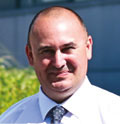 Drawing on over a decade of experience, Jonathan Eland, Sales Director of PPL Training presents anecdotal evidence from recent client case studies on the key similarities and differences in the training needs of SMEs and larger organisations
Drawing on over a decade of experience, Jonathan Eland, Sales Director of PPL Training presents anecdotal evidence from recent client case studies on the key similarities and differences in the training needs of SMEs and larger organisations
With such a varied client base (from sole traders, to multinational corporations), all of whom work within facilities management in one form or another, we continually ask…
WHAT CAN WE LEARN FROM YOU?
We recently conducted a number of case studies with key contacts across our client base, two of which I will be referencing here.
We spoke to Linda Corrigan, Lead Training and Compliance Officer at Northern Lincolnshire and Goole NHS Foundation Trust (NLAG), and entrepreneur and business owner Claire Hewitt of Legionella Solutions Northeast (LSNE).
SHARED CHALLENGES
From our conversations with Corrigan and Hewitt, we were able to identify the following shared challenges for SMEs and larger organisations:
Ageing and increasingly complex estates: Through our work with NLAG and other NHS Trusts, we have begun to understand the real challenges that their complex estates can present when they are not maintained by skilled, knowledgeable professionals.
These long-standing issues with estates often cause problems for contractors, like LSNE who have to go onto these sites to carry out risk assessments, maintenance procedures or whatever else is required.
Ever-changing legislation and guidance: In buildings were outstanding maintenance work is required, you are more likely in our experience, to get into hot water where changes in legislation and guidance are concerned. This is why the provision of training that outlines the most recent changes and general best practices is crucial.
Providing evidence of competence: Both NLAG and LSNE spoke of the importance of certification. Now more than ever, third party recognition is of paramount importance for individuals and businesses who are looking to demonstrate competency.
No training or certificate will make you competent. But the ability to demonstrate your understanding of key technical terminology or knowledge of Safe Systems of Work can be gained through attending training courses specific to your chosen / given discipline.
THE KEY DIFFERENCES
Equally important takeaways from these conversations, are the differences between the needs of SMEs and larger organisations:
- Demand for training courses at a larger organisation is greater than demand at an SME due to sheer size
- Capacity to undertake training is greater within a larger organisation than an SME due to shared workload
- Opportunity cost of training for an owner of an SME has a greater weighting than that of a salaried employee of a larger organisation
- Specialisation in a discipline is more common among SMEs
- Dedicated personnel for learning and development is more common in larger organisations
WHAT IT ALL BOILS DOWN TO
Ask these questions:
Experience: Are the right personnel available to deliver the training course?
Responsibility: What role is the delegate on the training course aiming to fulfil, and what will they be responsible for?
Knowledge: What are the key learning areas that the training needs to cover in order to prepare the delegate for said role?
Unique Requirements: Are there any unique requirements of the particular sector that the delegate will be working in that need to be considered? – Military vs Healthcare vs Commercial for example.
Mutual Benefits: What does the delegate get out of the course? A certificate, a log book, an experience. There is an exchange of goods and services happening during a training course, which is something that is sometimes pushed to one side in favour of a quick-fix 60-minute webinar to tick a box and fill a line in a CPD record.
HOW CAN TRAINING PROVIDERS BE BETTER?
In carrying out these case studies, we have been able to identify strengths and weaknesses in our own performance as a training provider, and address them. To double down on what we know works, we can say with a degree of certainty that training providers should look to:
- Consult subject matter experts
- Provide third party certification
- Be flexible without breaking
- Offer ongoing support
- Ask for feedback
- Be an asset
On that last point. The relationships we build with our clients is first priority, and understanding the nuance and similarities of these clients, regardless of number of employees or annual turnover, is what really matters to us.





